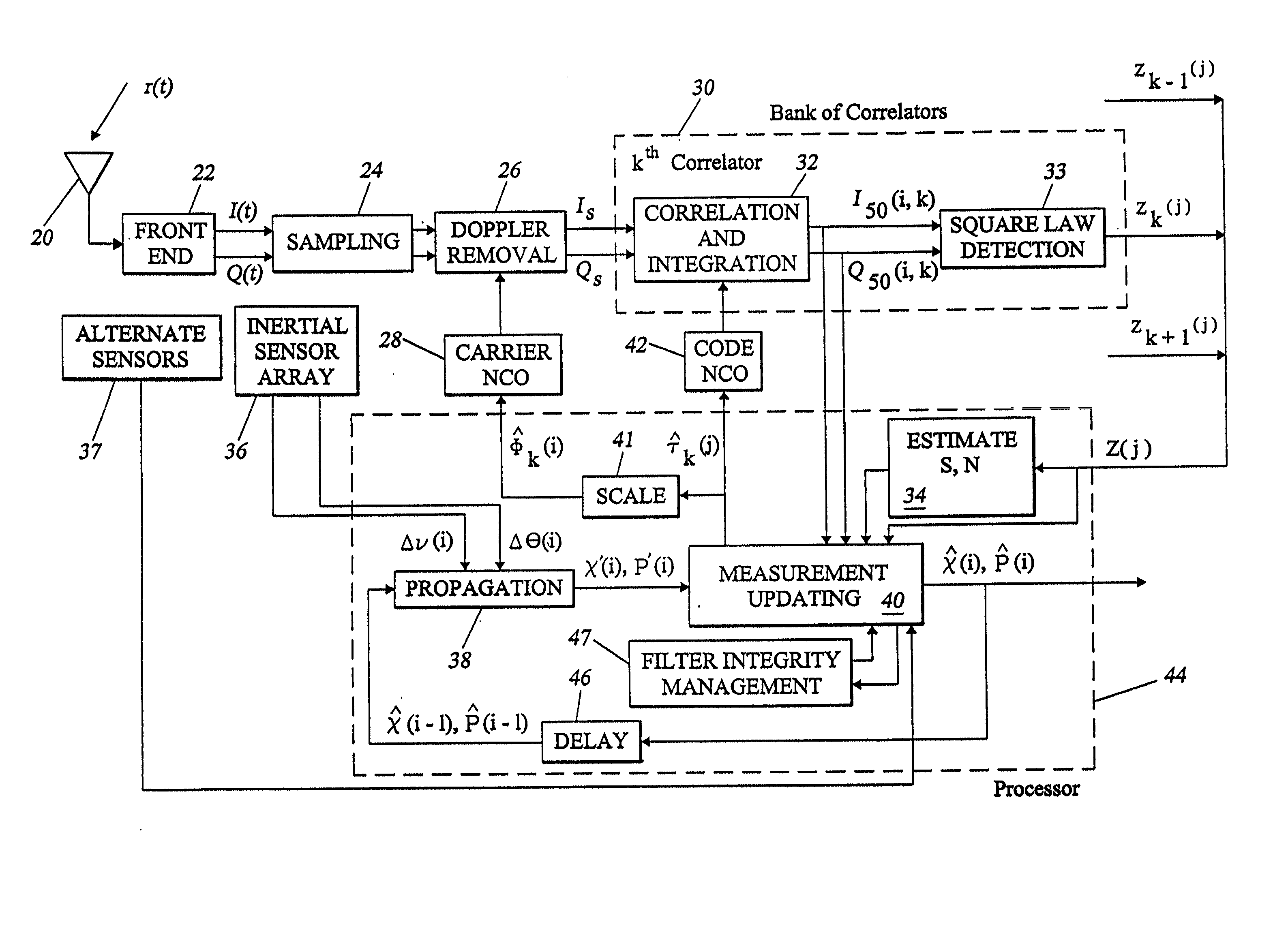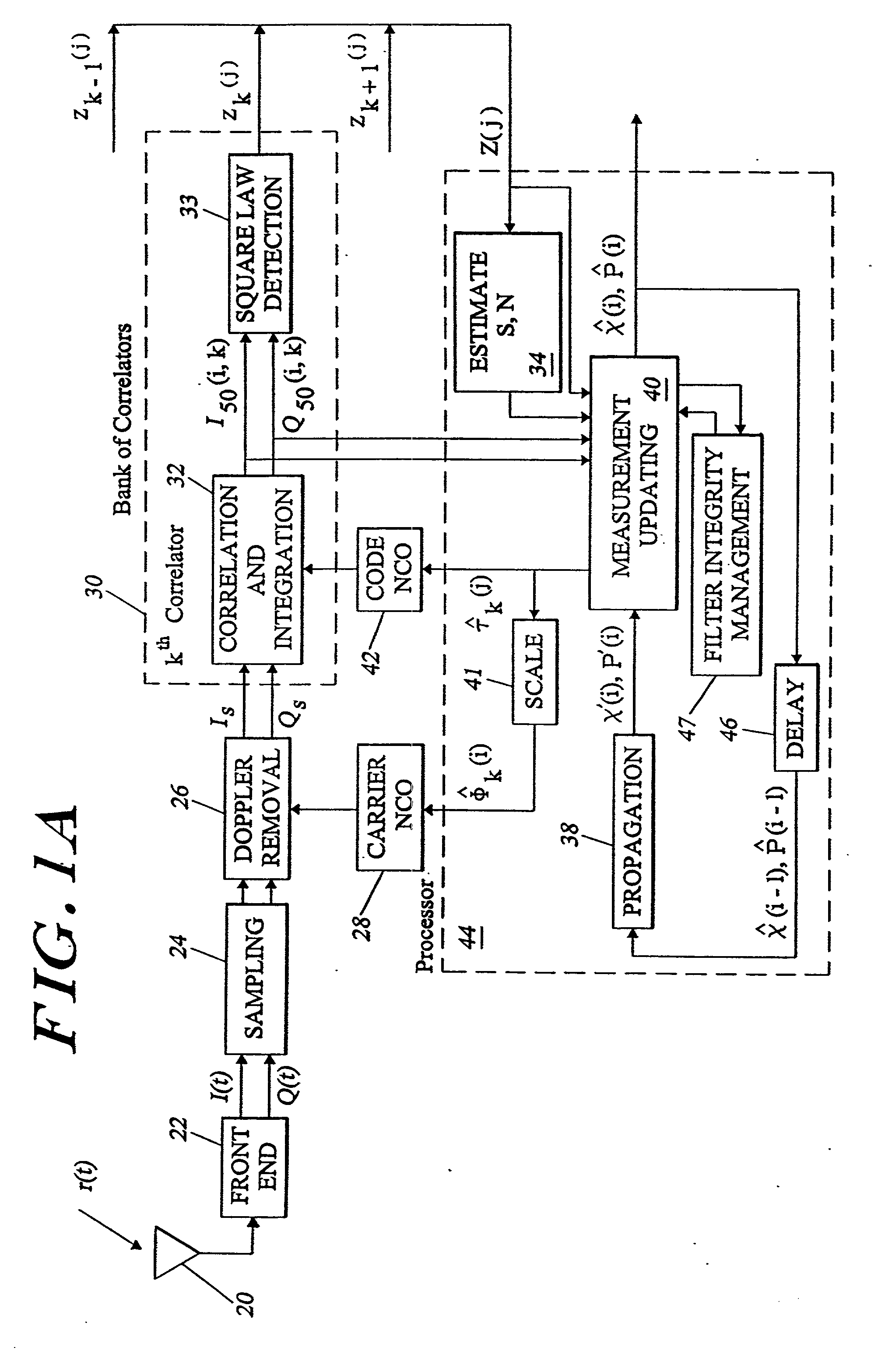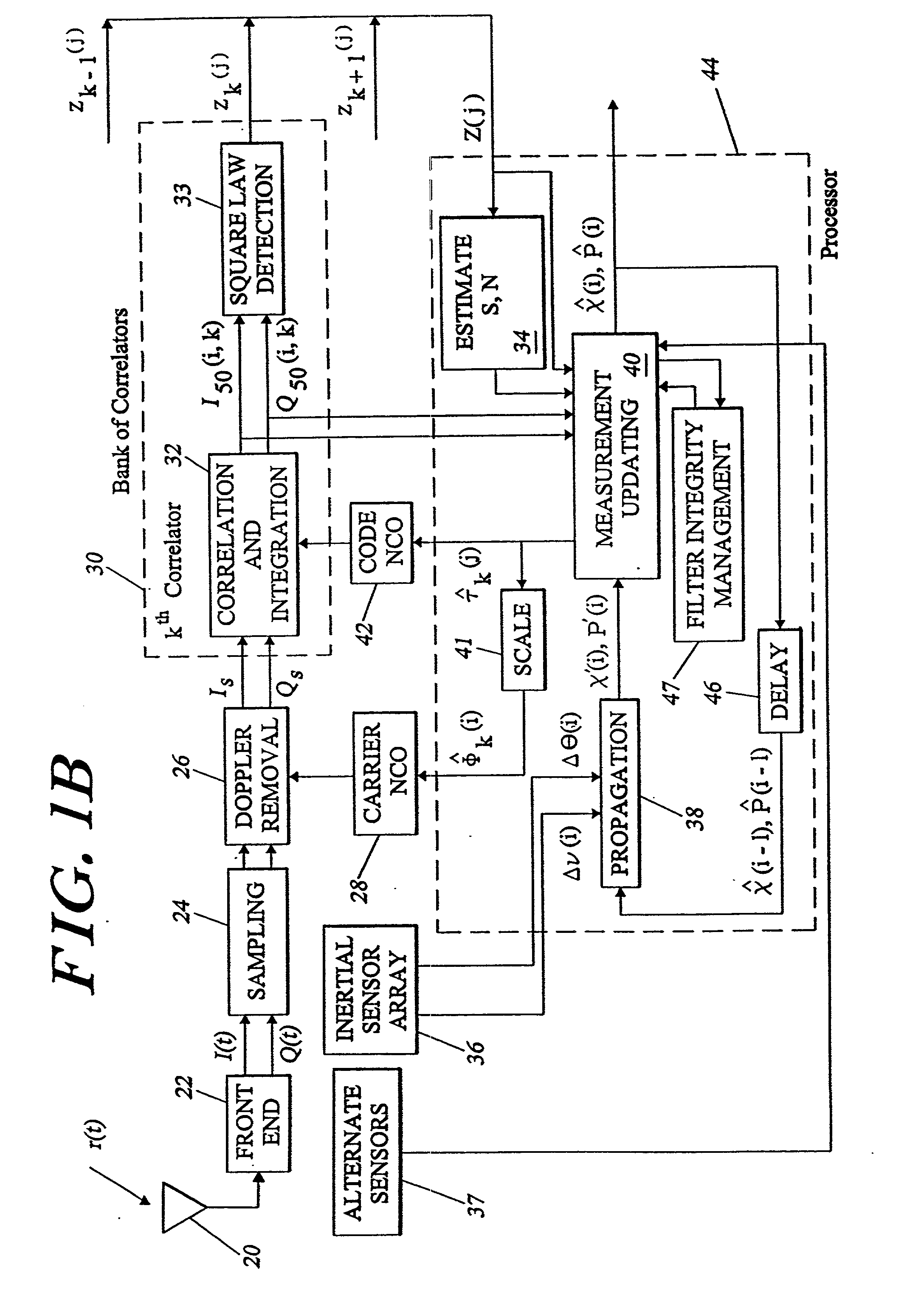Deeply-integrated adaptive GPS-based navigator with extended-range code tracking
- Summary
- Abstract
- Description
- Claims
- Application Information
AI Technical Summary
Benefits of technology
Problems solved by technology
Method used
Image
Examples
Embodiment Construction
[0050] Overview
[0051] GPS code tracking employs knowledge of transit time and the speed of light to determine relative position along the satellite-to-receiver line-of-sight to enable specified worldwide navigation accuracies of approximately 100 meters (95% probability) for civilian C / A code and approximately 20 meters for dual-frequency PCY) code. These accuracies are often exceeded in practice. Navigation errors may be reduced to approximately 1 meter if nearby GPS transmitters, such as pseudolites, are employed to eliminate propagation errors.
[0052] Carrier tracking is maintained in modern systems using Doppler (velocity) measurements which reflect a change in the received signal carrier frequency. If the interference environment is benign, then carrier tracking may be used to achieve accuracies even greater than those achievable by code tracking, on the order of 1 centimeter. However, the carrier tracking threshold is approximately 15 dB below the code tracking threshold, makin...
PUM
 Login to View More
Login to View More Abstract
Description
Claims
Application Information
 Login to View More
Login to View More - R&D
- Intellectual Property
- Life Sciences
- Materials
- Tech Scout
- Unparalleled Data Quality
- Higher Quality Content
- 60% Fewer Hallucinations
Browse by: Latest US Patents, China's latest patents, Technical Efficacy Thesaurus, Application Domain, Technology Topic, Popular Technical Reports.
© 2025 PatSnap. All rights reserved.Legal|Privacy policy|Modern Slavery Act Transparency Statement|Sitemap|About US| Contact US: help@patsnap.com



